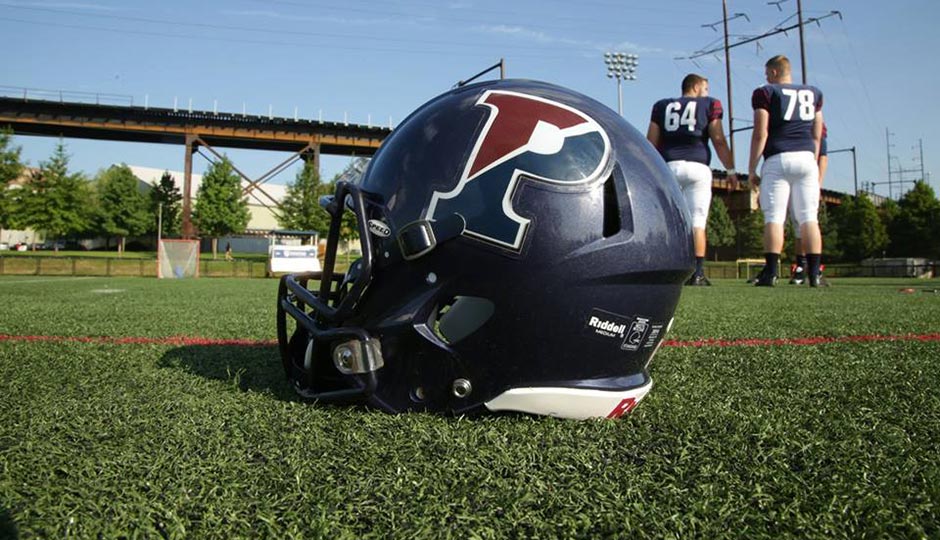No More Tackling at Ivy League Football Practices

Photo | Penn Athletics Facebook
In what could be the first faint peal of a death knell for college football, the Ivy League has announced that it will no longer allow players to tackle one another at practices. The decision was unanimous, approved last week by all eight Ivy League coaches. The move is, of course, intended to reduce concussions suffered by student athletes.
Dartmouth has banned tackling at practices since 2010, with players hitting pads and tackling dummies instead. “People look at it and say we’re nuts,” Dartmouth head coach Buddy Teevens told the New York Times. “But it’s kept my guys healthy.” Since institution of the ban, his team has gotten progressively stronger, going from 3-4 in 2010 to 6-1 in 2014 and in 2015, when it shared the Ivy League title with Penn and Harvard. (It was the only Ivy to beat Penn last season.)
NCAA guidelines for football allow full-contact practices up to four times a week in the preseason and twice a week in season. Coach Teevens says the restriction cut concussions from an average of more than 20 per season to just a handful and has improved tackling, since players now focus more on technique: “It hasn’t hurt our level of play. It’s actually made us a better team.”
The Ivy League has taken other steps to protect its football-playing students; in 2011, it cut back the number of full-contact practices. The Ivies play only 10 games per season, compared to 12 for, say, Penn State in the Big Ten, and Ivy football teams don’t compete in post-season play. God knows the Ancient Eight only grow ever more selective when it comes to admissions, with Penn early-decision applications last fall at a record high.
The tackling ban may be good for athletes’ brains, but it’s sure to draw jeering from other colleges, which already love to throw shade at the quality of Ivy play. (We see you, Temple!) And college football attendance overall is slumping — especially at Penn, which had 3,000 fewer fans on average at 2014 games, down the most of any of the Ivies. Just 11,000 people were on hand for the 2015 Homecoming, which saw the Quakers come from behind to beat Princeton. Franklin Field holds 52,500. Click through for the photo: That’s a lot of empty seats. But the league seem serious about safety first: It’s also considering rule changes to reduce concussions in field hockey, ice hockey, and men’s and women’s soccer and lacrosse.
Follow @SandyHingston on Twitter.


